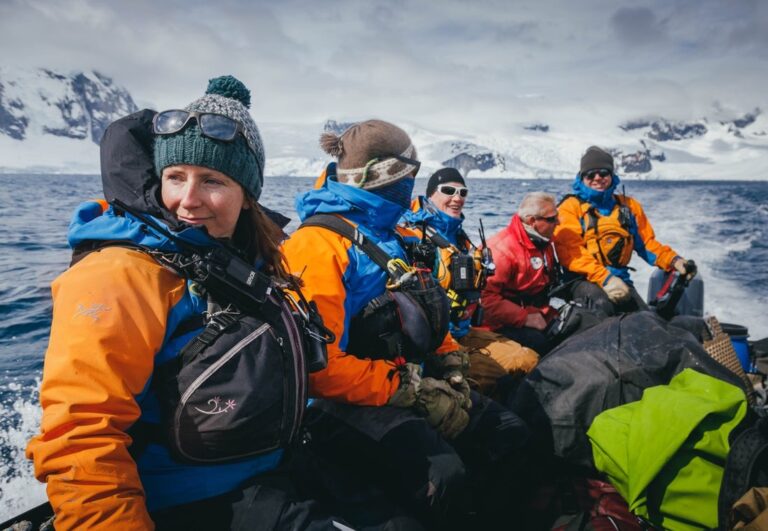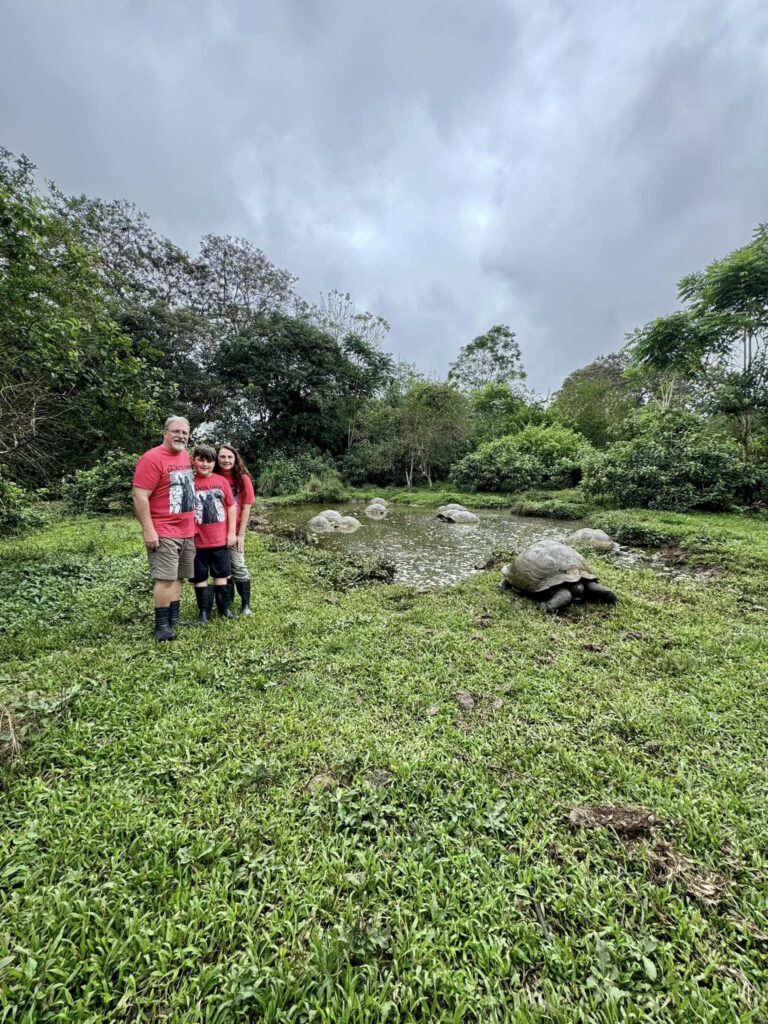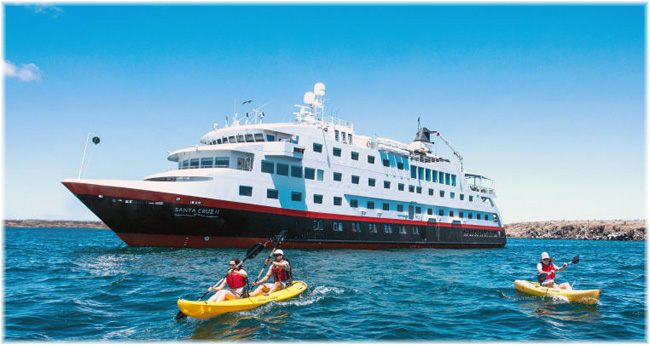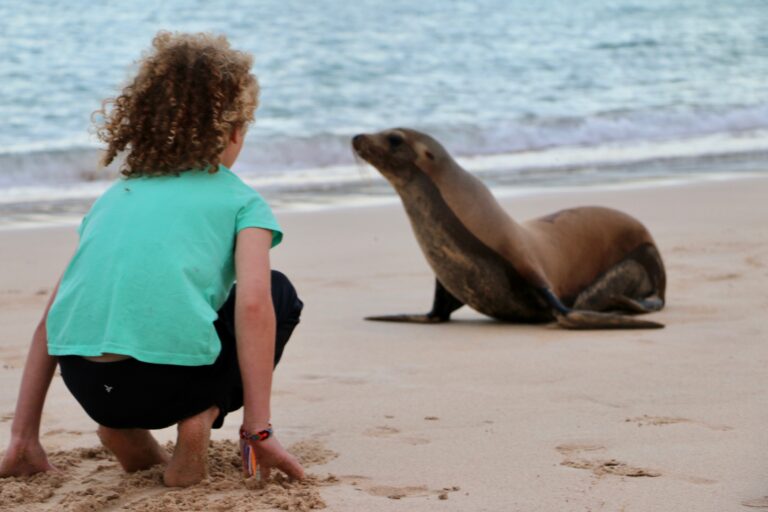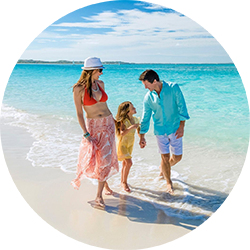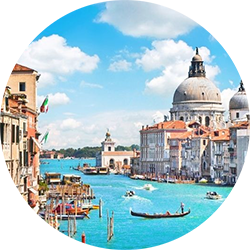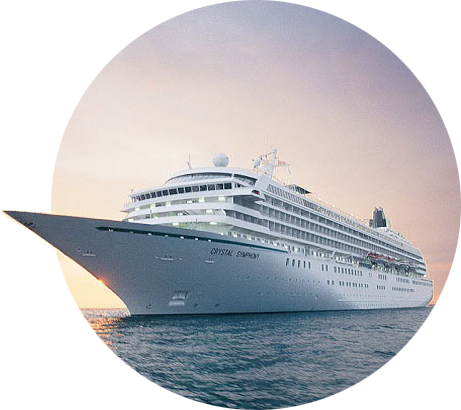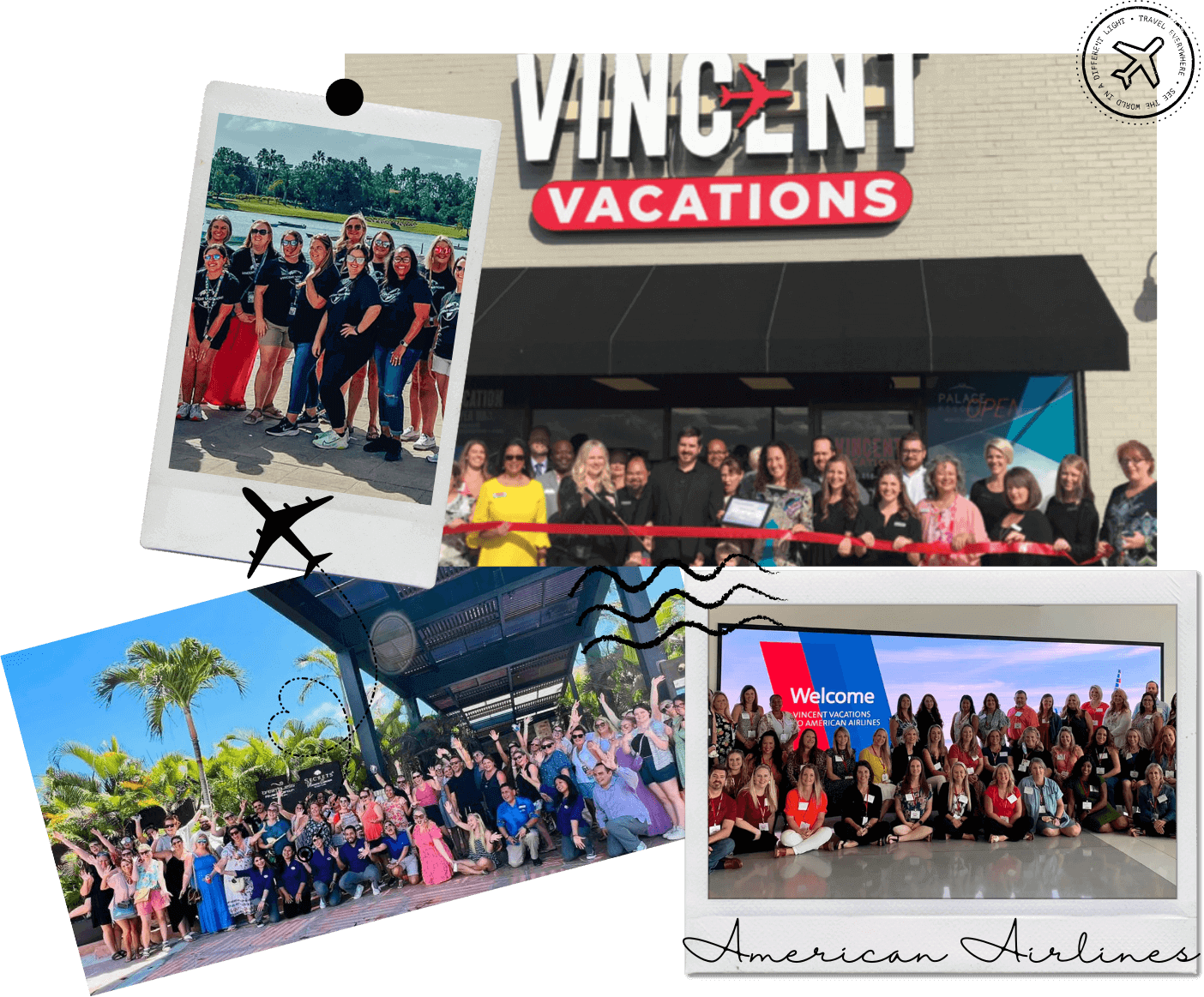Penguins and dolphins, sea lions and iguanas, tropical birds and giant tortoises—this collection of species comes together in a single destination on the equator. It's no surprise that these islands, 600 mi/970 km off the coast of Ecuador, are so special. Their remoteness from other landmasses and the absence of human settlements until the past century allowed their animal inhabitants to live with little fear of predators. As a result, the islands have an abundance of animals, birds and reptiles that are easily viewed, with or without binoculars.
The islands are best known as the home of giant tortoises that can weigh up to 500 lb/227 kg and live over 100 years. Visitors will also see marine iguanas (the only seagoing lizards in the world); scarlet-breasted frigate birds; blue-footed, red-footed, masked and Nazca boobies; tiny penguins at home in the tropics; mammoth sea lions; and giant, graceful albatrosses. About half of the species are endemic to the islands, found nowhere else on Earth.
Volcanic in origin, the archipelago has 13 large (and six lesser) islands whose terrain is mostly stark and barren, consisting primarily of a lava rock- and cacti-filled landscape in an arid climate. However, the highlands of the larger islands are dominated by volcanos and cloud forests, with lush vegetation and cooler temperatures.
One of the most famous visitors was Charles Darwin, whose five-week stay in 1835 led him to note that some species of birds had changed both physically and behaviorally because of their environment and evolved into distinct species over time. His famous book On the Origin of Species by Means of Natural Selection (1859) and the theory of evolution were influenced greatly by what he saw there.
These days, most visitors see the islands as part of a cruise tour. Small boats, or pangas, drop travelers off on individual islands, where knowledgeable naturalists introduce the lifestyles and mating rituals of the native species. Swimming and snorkeling are possible at most sites and are often enhanced by curious sea lions, sea turtles, an occasional penguin and scores of tropical fish. The marine environment of the Galapagos is a protected area; it is one of the largest marine reserves in the world after the Great Barrier Reef and newer reserves in Antarctica and Hawaii.
Strict rules imposed by the Galapagos National Park require that licensed guides accompany all visitors and that visitors stick to the 60 designated sites on the islands, most of which are uninhabited. Visitors may walk only on marked trails and cannot touch or feed the animals, even though the animals often come close.
Geography
The Galapagos Islands lie 600 mi/970 km off the coast of Ecuador. Thirteen of the islands are larger than 6 sq mi/15 sq km, and the rest of the archipelago is made up of six smaller islands and more than 100 islets. The entire area (approximately 3,089 sq mi/8,000 sq km) straddles the equator, which passes directly through Isabela, the largest of the islands, representing more than half of the entire surface area of the islands combined.
The entire chain of islands is the result of volcanic activity. There is an oceanic "hot spot" where the islands of Fernandina and Isabela are now located and where all islands to the east once were. There, magma rises from the Earth's mantle to form the volcanic islands, some of which continue to be shaped by recent eruptions. As the Nazca plate moves slowly southeast, at approximately 1.6 in/4 cm per year, it takes the islands with it. Over time, this series of events has produced the current archipelago.
History
Because the Galapagos Archipelago is so far from other landmasses, the islands were ignored by humans for centuries. Tomas de Berlanga, a bishop of Panama in route to Peru, wrote the first account of the islands in 1535, telling the king of Spain he had seen tortoises big enough to carry a man. His tales put the islands on the map. European rivals of Spain, including British pirates, used the islands as a refuge in the 16th and 17th centuries in their attacks on the Spanish colonies in South America. Whalers also began using the islands in the late 1700s, where they, too, hunted tortoises and birds for food and seals for fur.
Years of human destruction of Galapagos fauna left fur seals nearly extinct and approximately 200,000 tortoises dead. At various times, sailors released goats onto some of the islands, which provided meat to passing ships but led to the elimination of many native Galapagos plants. Today, the tortoises, seals and other Galapagos animals are highly protected, but the eradication of goats is still in progress.
The islands' first known resident was Patrick Watkins, an Irish castaway who arrived on the island of Floreana in 1807. Watkins didn't stay long—only eight years—nor did many others, until Darwin arrived on the HMS Beagle in 1835. Darwin's writings about evolution stimulated interest in the islands among scientists, wealthy explorers and several groups of eccentrics.
Ecuador, which claimed the islands in 1832, officially designated about 97% of the islands a national park in 1959 to protect them from development. In 1978, UNESCO made the islands a World Heritage site. The Galapagos Marine Reserve was created in 1998; it is one of the world's largest after the Great Barrier Reef and recently created reserves in Antarctica and Hawaii.
The islands' growing popularity as an ecotourism destination has created its own set of problems. Since the 1970s, population growth on the islands has increased by 6.2% each year as the result of births and immigration. About 25,000 people, many of them impoverished Ecuadorians, now live on the islands. Many have moved there seeking a better life and jobs, at first in fishing but now in tourism. Along with them have come nonnative animals and plants that are altering the unique heritage of the islands.
The Ecuadorian government has taken steps to limit immigration and eradicate such animals as feral goats. It also regulates the number of visitors and the size of boats allowed to tour the islands. Fishing boats caught in park waters have been detained and their owners fined. But tensions run high in the islands regarding their management. There have been several strikes by fishermen, as well as by national park wardens. Many believe the Ecuadorean government is still falling short of adequately safeguarding this unique archipelago for future generations.
In March 2007, the same year the World Heritage Committee added the Galapagos to UNESCO's list of World Heritage sites in danger, the Ecuadorian government signed a national decree that declared the islands' management as a top priority, favoring its conservation and protection. Initial results are hard to quantify, but this step implies that stricter rules may be put into effect regarding development on the islands.
As it stands, permission is not required to build a hotel (hence the burgeoning size of Puerto Ayora), but tour operators must secure permits to enter the national park, which is managed by the Ministry of Tourism. Some boats are authorized to disembark onto various islands, but others must anchor in the waters offshore. As of 2012, no vessel is permitted to visit the same site more than once in a 14-day period. Illegal immigration to the islands, illegal fishing, introduced species and poor education of the local population remain dangers to the Galapagos.
Potpourri
British Capt. James Colnett set up a post office barrel on Floreana in 1873. It was originally used by whalers, who dropped their letters into the barrel as they went out to sea; the mail was relayed by those heading home. Today, this area is called Post Office Bay, and the barrel is often used by tourists.
The late Kurt Vonnegut wrote the novel Galapagos in 1985 about the last survivors of the human race being shipwrecked on the islands.
The Galapagos Islands is the only place where penguins live north of the equator. This makes the species the only tropical penguin on Earth.
There were once up to 15 subspecies of giant tortoises on the islands. Only 11 of those species remain.
The only nonflying cormorant in the world lives in the Galapagos Islands. It evolved to hunt fish by diving from shore and eventually lost the use of its wings for flight.
This entire island chain is named after the tortoise, which translates to "galapagos" in Spanish.
The archipelago was known as the Enchanted Islands because of the way strong and shifting currents made navigation difficult. After he visited the islands, Herman Melville used this name as the title of a short story he wrote about the Galapagos.
Location
A bus or taxi from the Baltra or San Cristobal airport terminal transports cruise travelers to a nearby port or dock to board a waiting Zodiac, which takes them to a boat anchored offshore. There are no docking facilities for ships on the islands—not even in populated areas. Ships must anchor offshore.
Shore Excursions
Shore excursions to uninhabited islands are always made with a naturalist guide and must follow the strict rules of the national park. Activities include scuba diving, snorkeling, swimming, hiking, bird-watching, photography, sea kayaking and glass-bottomed-boat tours. Inhabited islands, such as Santa Cruz, offer biking, scuba diving, horseback riding, surfing, snorkeling and sailing.





















